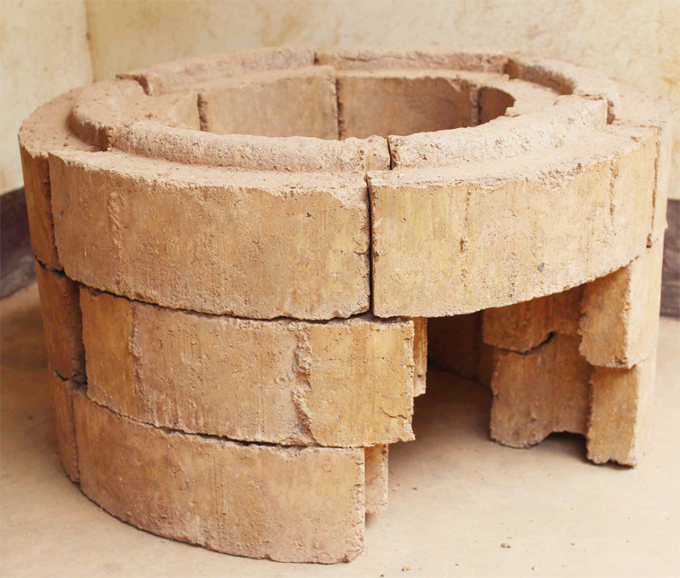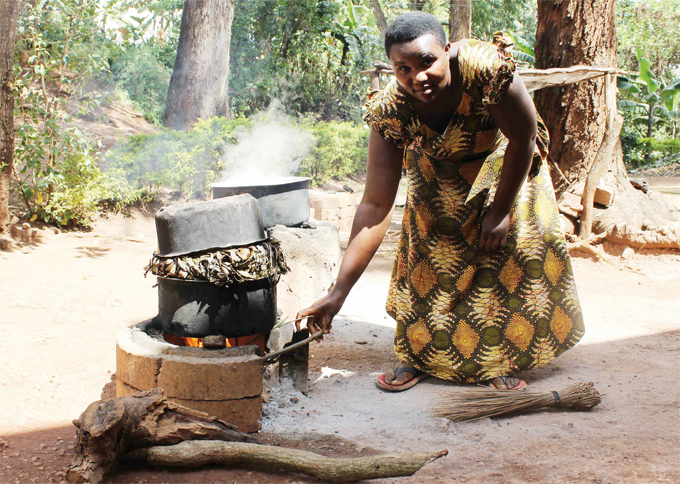Cooking made easy with the Makastove
Dr Moses Musaazi, an environment activist, seeks to protect trees through his invention of the Makastove
For a long time, forests have been encroached on to get firewood for cooking and burning bricks for construction, which is a threat to the forests environment.
Dr Moses Musaazi, an environment activist and the managing director of Technology for Tomorrow based in Kawempe, has a solution.
He was approached by the millennium village in Insingiro district, western Uganda, to design a cooking stove that can save at least 50% of the fuel and will not cost more than sh20,000 of the fuel
This is what inspired him to invent the MakaStove.
He says there are many cooking stoves at local exhibitions, but the Makastove strives to meet greater environment-saving goals.
He got the idea from his interlocking bricks business, initially used for constructing water tanks. Every type of brick needs a specific machine, which is expensive. He made the first MakaStove for his wife three years ago from bricks he designed using free hand before designing a machine.
"One day, my wife asked to shake my hand. I wondered why after 30 years together. She said among the very many things you have invented, this one has touched my heart," Musaazi said.
Making of the Makastove
Musaazi says he uses 95% soil, and 5% cement to make the interlocking bricks. The bricks take about two days to dry under a shade before they can be used.
 A newly set up Makastove.
A newly set up Makastove.
Each brick is thick and weighs about 6kg. The idea behind the thickness is to retain heat during the process of cooking.
After cooking, the heat retained can be used for boiling drinking water or warm water for a bath.
According to Musaazi, the stove stores heat for six to 12 hours, depending on how hot it was when the cooking stopped.
Cost implication
It takes 17 bricks to make the MakaStove, which is sold at sh15,000. But one can have three versions of the MakaStove using 17, 15 or 10 bricks.
Musaazi says the beauty about it is that he is empowering the users to design their own cooking stove, whereas other types of stoves are factory-made and cannot be changed.
"The Makastove is a Do- It-Yourself product. Now we are in Nakasongola, where we are making 200 cook stoves," Musaazi says.
He is targeting the rural people who have detached kitchens from the main house.
However, he plans to have a metallic base for people with kitchens inside their houses. He also plans to add a chimney for the indoor ones to make it appropriate for indoor cooking. There is also a plan to make bigger stoves with the same concept, for schools, institutions and other commercial ventures.
He has given out about 30 Makastoves to homes in Namasuba and Kawempe for experimental purposes and so far, the feedback has been positive.
Environment friendly
The way MakaStove is manufactured does not use fire to burn the bricks, whereas most of the energy saving stoves on the market have an element of burning somewhere in the manufacturing process.
Musaazi says the clay stoves, for example, must have burning and because clay comes from the swamp it causes encroachment on wetlands.
"The Makastove can be lit using twigs, grass and leaves, so we are saving at least 50% of the cooking wood or charcoal. Therefore, we save about 50% of the trees being cut down for charcoal," he says.
Users' opinion
Oliver Naguhirwa, a househelp: The Makastove has made my work easy because I do not attend to the fi re like I used to while using the ordinary stove. The stove retains heat, which I use for preparing porridge, boiling drinking water and warming bathing water.
 Naguhirwa cooking using a Makastove. The stove emits less smoke and saves on the amount of wood burnt during the cooking. Photo by Ahmad Muto
Naguhirwa cooking using a Makastove. The stove emits less smoke and saves on the amount of wood burnt during the cooking. Photo by Ahmad Muto
Catherine Nakitto, a resident of Kasubi: The Makastove consumes little firewood and stores heat. It takes fewer hours to cook a meal. I reduced the time taken cooking food from three hours to one and half hours. The stove produces less smoke.
Jane Nakitto, a caterer at Makerere University: I no longer hurry to work, because now even if I reach at 11:00am the food will be ready on time. I used to burn a lot of firewood, but now I use less wood. The stove also produces less smoke compared to ordinary stoves. At least 50% firewood has been saved for the last seven months I have used it.